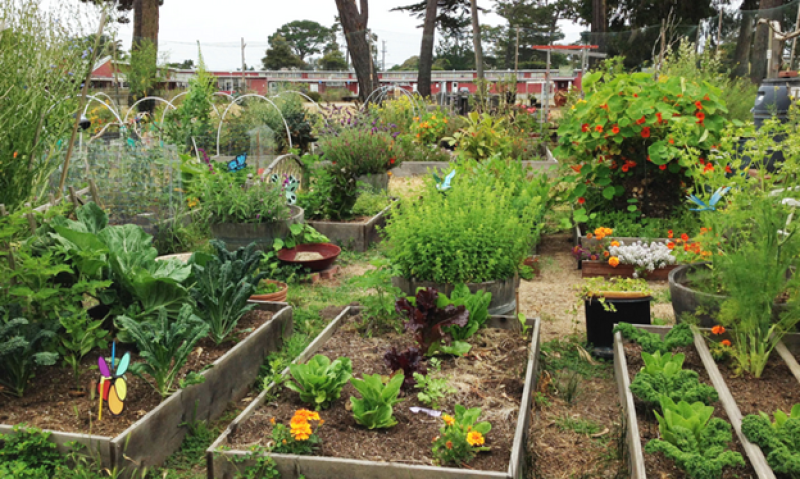
Bees, birds, butterflies, bats: NSF helping keep pollinators, bioeconomy healthy
What did you have for breakfast this morning? Bananas? Berries? Honey? Coffee? If so, or if you had countless other foods, your meal is thanks to pollinators like bees, butterflies, birds and bats.
And it isn't just your one meal; by some estimates, between $235 and $577 billion worth of annual global food production relies on the contributions of pollinators.
U.S. National Science Foundation investments are helping to sustain this key segment of the bioeconomy — the part of the U.S. economy that relies on biological interactions, biotechnologies, biomanufacturing and more — by advancing understanding of the life and role of pollinators and how they interact with the plants they pollinate.
Decades of data: Long-term research on honey and bees
Perhaps the most well-known product of pollinators is honey. From grocery stores to diners and coffee shops to the cough and cold aisle of pharmacies, it seems like honey is everywhere. And yet, honey production has been declining for nearly half a century.
NSF-supported researchers at Penn State analyzed 50 years of data from the U.S. Department of Agriculture to try and understand why bees have been making less honey over time. The analysis points to climate change as the leading cause, with soil productivity also contributing to the decline.
A promising result of this research is that areas with productive soil — meaning its physical, chemical and biological properties enhance its ability to support crops — produce more honey on average, whether bees are in warmer or cooler regions.
Long-term data on bees themselves is helping to fill out missing knowledge of how various species respond to climate change, enhancing the ability to predict how they'll react in the future.
Researchers at the Sevilleta Long-Term Ecological Research (LTER) program, part of the NSF LTER network, have examined changes in bee populations in the Southwestern U.S. since 2002. To the researchers' knowledge, this makes it the longest ongoing bee monitoring effort. The team collects data on heat and drought tolerance, body size and weight while tracking changes to the species’ biodiversity over time.
Recently published research found that bees that best tolerated heat and desiccation increased the most over time, which could lead to more homogeneous communities in the future. Such changes in community makeup could reduce pollination, impacting the flowers and crops growing in the area, as diversity among bees is associated with maximum pollination.
Given how honeybees alone pollinate approximately $15 billion of crops in the U.S. per year, and native bees have an estimated market cap of $4 billion per year, understanding what drives changes in these populations is critical to the economy.
Beyond bees: Other pollinating species
While bees are by far the most economically important pollinators in the U.S., other pollinators like butterflies, bats and birds help support wildflower populations and other plants that provide critical ecosystem services, helping to maintain environments from which we derive economic benefits. Maintaining critical ecosystems — including through sustaining wild pollination — has been estimated to avert global economic losses of $2.7 trillion per year by 2030. The relationships between these pollinators and the plants they fertilize are a focus of NSF investment to understand how to strengthen the interactions and promote ecosystem health.
Examining the interactions between butterflies and flowering plants in the Great Basin and the Sierra Nevada, NSF-funded researchers found that changes in climate and increases in disturbances from fire and other hazards lead to decreased pollen diversity with the domino effect of harming pollinators and the ecosystems in which they live. Shifting the ecological balance puts pollinators and plants at risk and could harm animals that feed on the insects.
"This type of research across pollinator species is critical as previous studies have shown that without animal pollinators, the viability of plant populations — including some of the ones we depend on to sustain ourselves — will be harmed," said Jeremiah Busch, a program director in the NSF Directorate for Biological Sciences (BIO) and an evolutionary biologist who has studied self-fertilizing plants.
How you can help maintain the pollination-based bioeconomy
While the decline of pollinator populations and interference in plant-pollinator relationships might seem an impossible problem to overcome, minor steps can aid in maintaining these economically important systems.
NSF-supported research has shown that converting vacant urban lots into greenspaces can support native bee populations. The most conducive conditions are created when these new greenspaces are surrounded by 15 or more connected acres of greenspace and flowering prairies with native plants.
Even planting just a few native plant species in a front or back garden and limiting pesticide use can create more pollinator-friendly spaces and support the ecosystem's health and the economy.
"Diverse networks of plants and pollinator species are essential to maintaining the beneficial interactions we rely on for food, to keep our ecosystems healthy, and to mitigate the impacts of climate change, all of which benefit the bioeconomy," said Kari Segraves, a program director in BIO, whose own research focuses on how species interactions increase biodiversity. "When a plant community declines, all the wildlife that depend on those plants can also suffer, but the reverse can also be true."





